Welcome our inaugural Storyteller in Residence, Wendy MacNaughton!
Wendy is the creator of DrawTogether, a community that spreads joy and delight, all while learning about artists’ processes and stories. For the next three weeks, follow her journey through the National Gallery’s collection. Discover the artists who inspired her and delve into their works. Then channel that inspiration: connect with art through Wendy’s drawing activity and creative community.
Get your pencils, paper, and FRIENDS ready, we’re drawing together with Wendy!

Alright friends, I’m so happy you’re here. This is a super special week in our collaboration with the National Gallery of Art.
In week one we dreamed BIG and came up with monumental projects. In week two we experimented with collage and drew with paper and scissors. And this week we are expanding from our traditionally solo practice of drawing to (drum rollllll) collaboration: that joyful, active, and unpredictable art of making things TOGETHER.
I mean, it’s called “DrawTOGETHER” for a reason.
This week we’re exploring a few artistic collaborations, including one of my own projects (!) and the famous surrealist game Exquisite Corpse. We’ll take a close look at how painter Kerry James Marshall plays with this technique, both in partnership with other artists and through his own unique approach.
Sound good? Good!
Let’s get started.
Collaborating Around the World
You might have noticed we’ve already learned quite a bit about creative collaborations in the last two weeks. We started this series with famous collaborative duo Christo and Jeanne-Claude, who worked hand in hand from conception through execution. Last week, we learned about Romare Bearden’s Spiral, the Black artist collective that advocated for civil rights and representation. Bearden’s famous collage work evolved from his unrealized idea for a collaborative collage project by Spiral.
But what about collaborations in which you can see evidence of the artists’ “hands” in the final work?
I have a fun one for you that my pal Julia and I made with 88 other awesome artists.
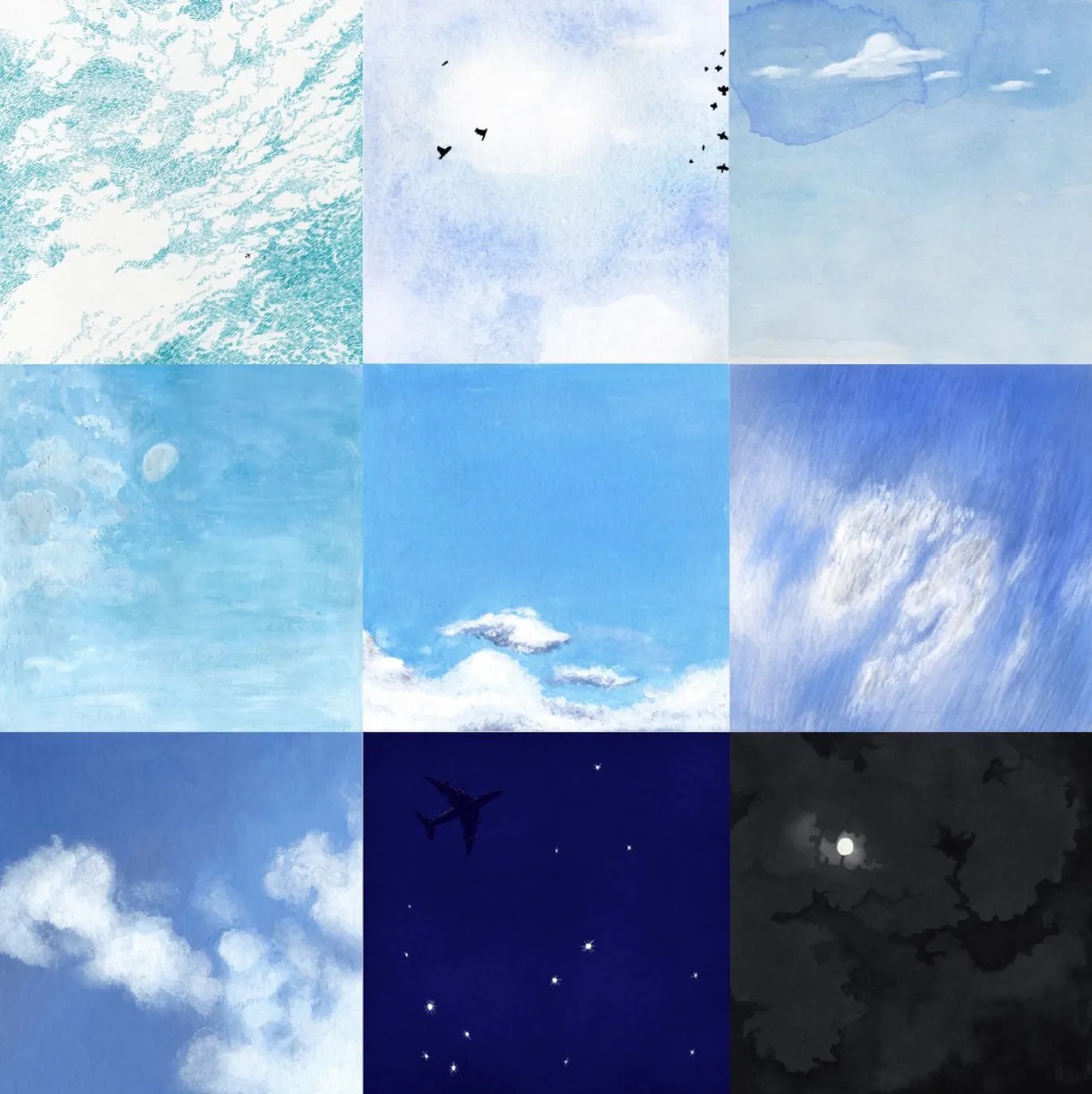
One Sky (detail), by Wendy MacNaughton, Julia Rothman, and Women Who Draw
In 2017 my dear friend and often-collaborator Julia Rothman and I founded the collective Women Who Draw. The advocacy database and community elevates the visibility of women, femme, trans, and gender-nonconforming artists working in the commercial arts. Later that year, we responded to the increasing divisiveness in the US and beyond with our first project with the group, called One Sky. We invited a group of artist-members to collaborate on an art piece: at an exact date and time, 88 of those artist-members around the world stopped what they were doing, looked up, and drew the sky.
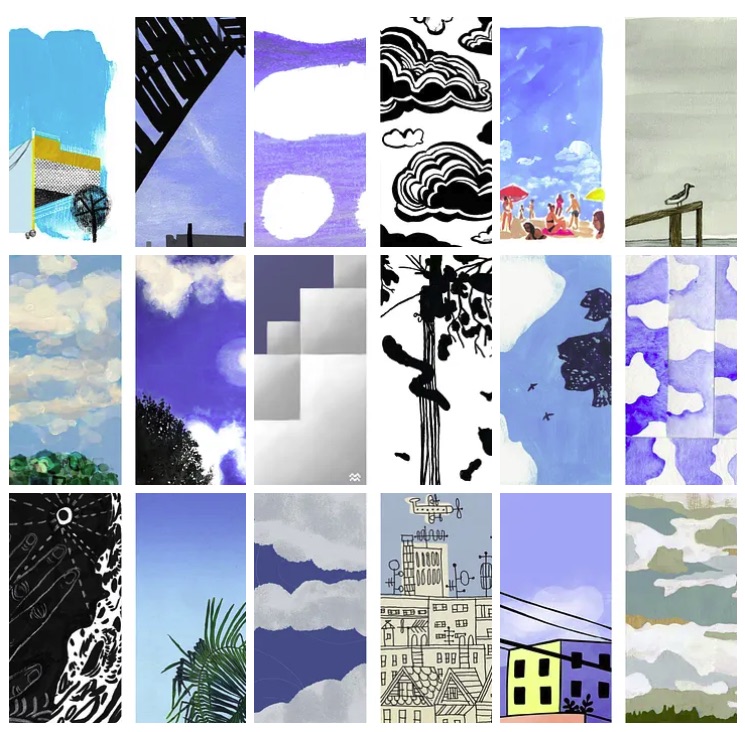
One Sky (detail)
An excerpt from our artists’ statement:
"On August 13, 2017, at precisely 12:00 pm Eastern Standard Time, 88 artists all over the world stopped what they were doing, looked up, and drew the sky…. Whatever sky the artist saw, they captured it on paper in their own unique style. They were, at that exact moment, separate skies. But when we view these drawings together, they become one far-stretching, simultaneous world view. They become a portrait of one shared sky."
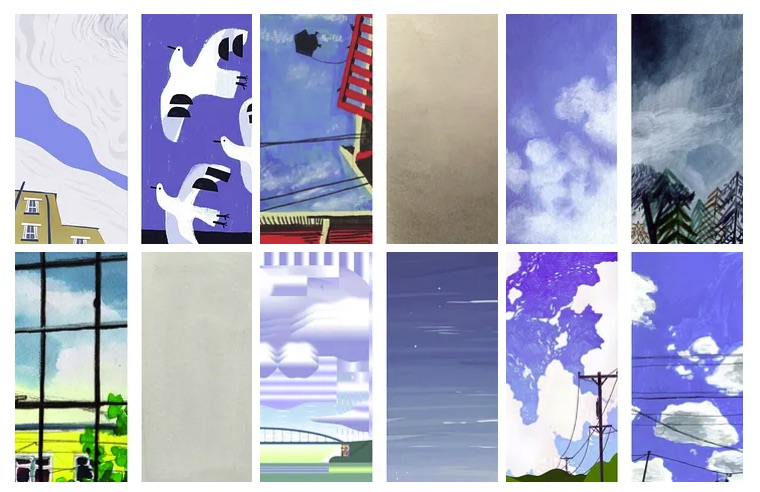
One Sky (detail)
The project was unexpected, uncontrollable, built on trust and freedom and curiosity and mutual respect. And it owes a great debt to one of the most famous collaborative art games ever created, the Exquisite Corpse.
The Exquisite Corpse
Fun fact: this surrealist game was NOT originally visual. Created by French surrealist writer André Breton in 1925, the game was initially text based. Each contributor added a word to a sentence without knowing the ones that came before. The name “Exquisite Corpse” comes from one of the resulting phrases: “The exquisite corpse will drink the new wine.” Today, it is known worldwide as a drawing game based in collaboration.
To play Exquisite Corpse, you start with a sheet of paper divided into sections. Each person adds a drawing to one section, then folds the paper back so that the next player cannot see what they drew. A few short lines extended over the fold indicate where the next player should continue, connecting their individual drawings. When the paper is unfolded, it reveals an unexpected and often bizarre image. Here’s one made by surrealist artists!
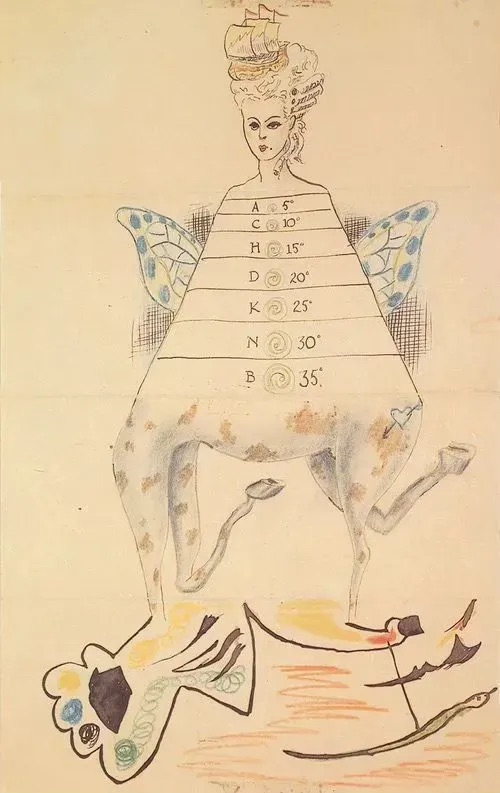
Exquisite Corpse by Max Morise, Man Ray, Yves Tanguy, Joan Miró. 1927.
The surrealists used this game to stimulate their creativity and tap into the subconscious. Each artist’s unique drawing contributed to an image far more interesting and surprising than any that a single artist could’ve come up with on their own.
Exquisite Corpses from Renowned Artists
In 2010 the New York–based Armitage Foundation invited over 200 contemporary artists to create collaborative drawings based on the Exquisite Corpse model. The foundation intended the project “to celebrate the theme of chance encounters, surprise and radical juxtaposition.
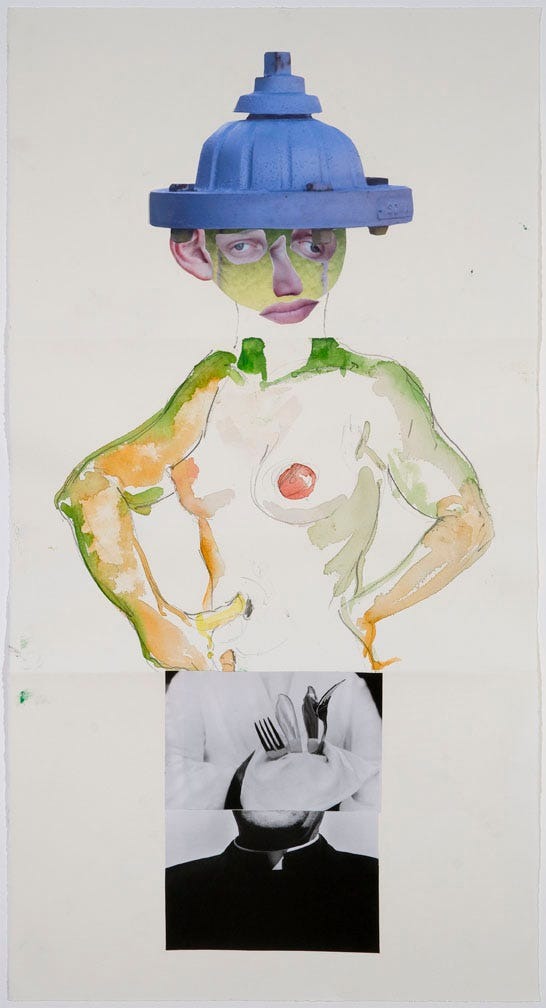
Diane Tuft, Eric Fischl, Ralph Gibson, Exquisite Corpse #1, 2010, ink jet print, pencil and watercolor, black and white print. Armitage Gone! Dance.
The artists were divided into groups of three or four. Each was assigned a body part: one for the head and shoulders, one or two for the torso, and one for the legs and feet. None of them knew who they were collaborating with. The finished drawings, each 16 by 30 inches, were sold as a benefit for the foundation. Among the artists who participated was Kerry James Marshall, one of the most prominent painters working today.
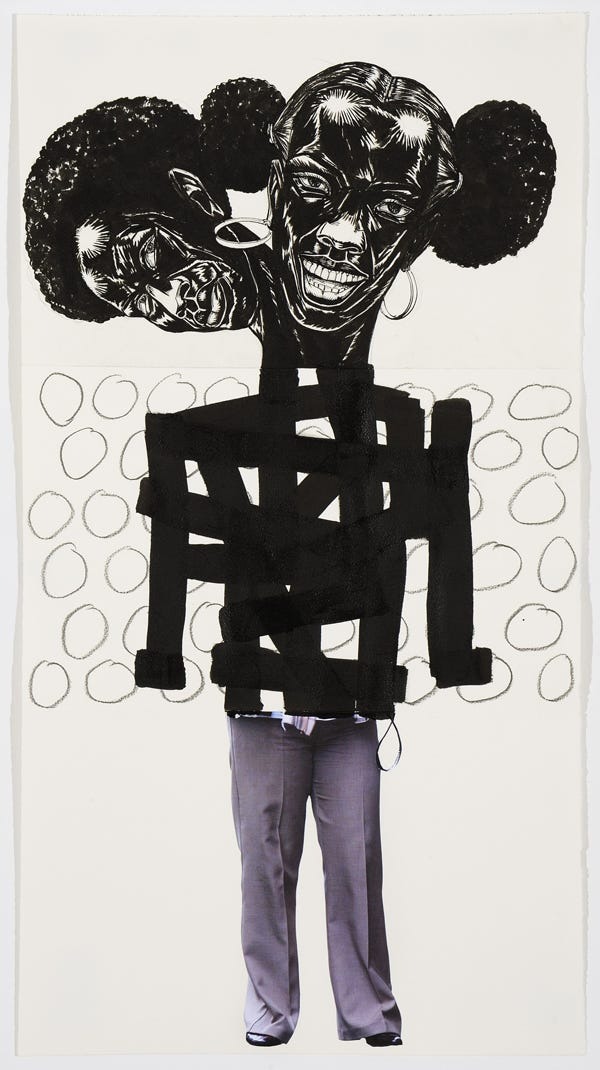
Kerry James Marshall, Jonathan Lasker, Josephine Meckseper, Exquisite Corpse #89, 2010, india ink, graphite, and color photograph. Armitage Gone! Dance.
Several years later in 2015, Printworks Gallery in Chicago also invited artists to collaborate on an Exquisite Corpse project. Each artist was sent a piece of paper with markings indicating where to draw. They also knew what area of the body they would be representing: top, center, or bottom. After the artist created their drawing, they mailed it back in to Printworks. Not even the gallery directors knew which artists and drawings would be stitched together.
The example below was the result of such a collaboration between Stephen DeSantis, Curtis Barone, and Kerry James Marshall. It is now in the National Gallery’s collection.

Kerry James Marshall, Stephen DeSantis, Curtis Bartone, Exquisite Corpse, 2015, brush and black ink, crayon, photolithograph collage, and colored pencil on three adhered sheets of blue wove paper, Gift of Bob Stana and Tom Judy, 2019.109.81
Kerry James Marshall’s Collaboration Across Time
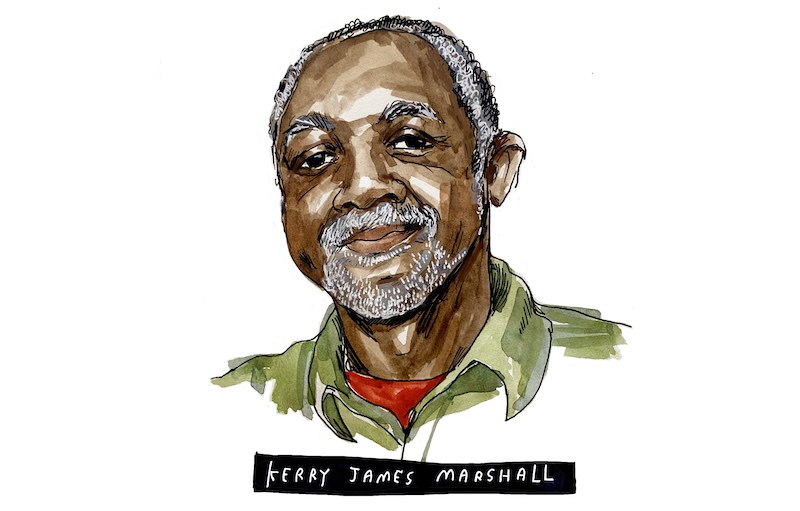
Kerry James Marshall works not only in collaboration with other artists but also in conversation with art history and African American culture. He’s best known for his towering history paintings that deal with social and historical ideas around race and representation. At the National Gallery, I got to see (and sketch!) his Great America and Voyager, which both address the transatlantic slave trade.

Kerry James Marshall, Great America, 1994, acrylic and collage on canvas, Gift of the Collectors Committee, 2011.20.1
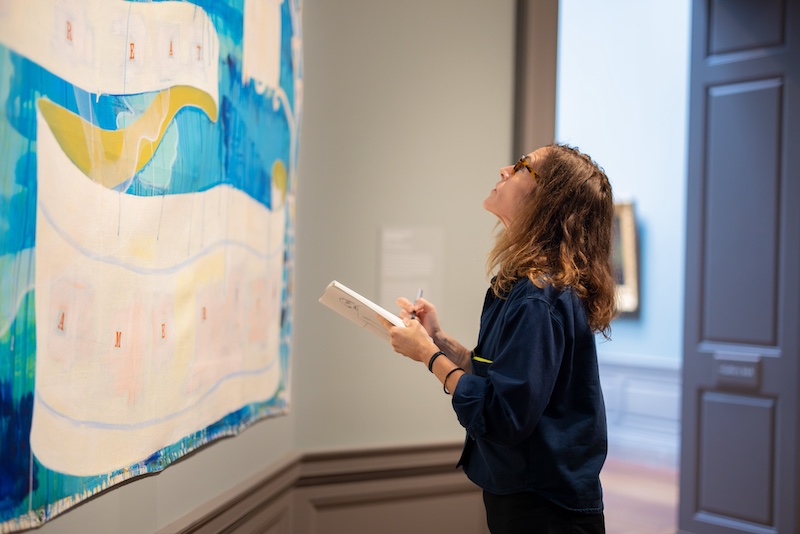
Looking closely at Kerry James Marshall's Great America, 1994
In 2022 Marshall exhibited a new, spectacular series of paintings: EXQUISITE CORPSE: This Is Not The Game. In this radical departure from his previous work, he riffed off the traditional surrealist game. Marshall created paintings with seemingly three of four separate approaches to the same subject, but he painted every section himself.
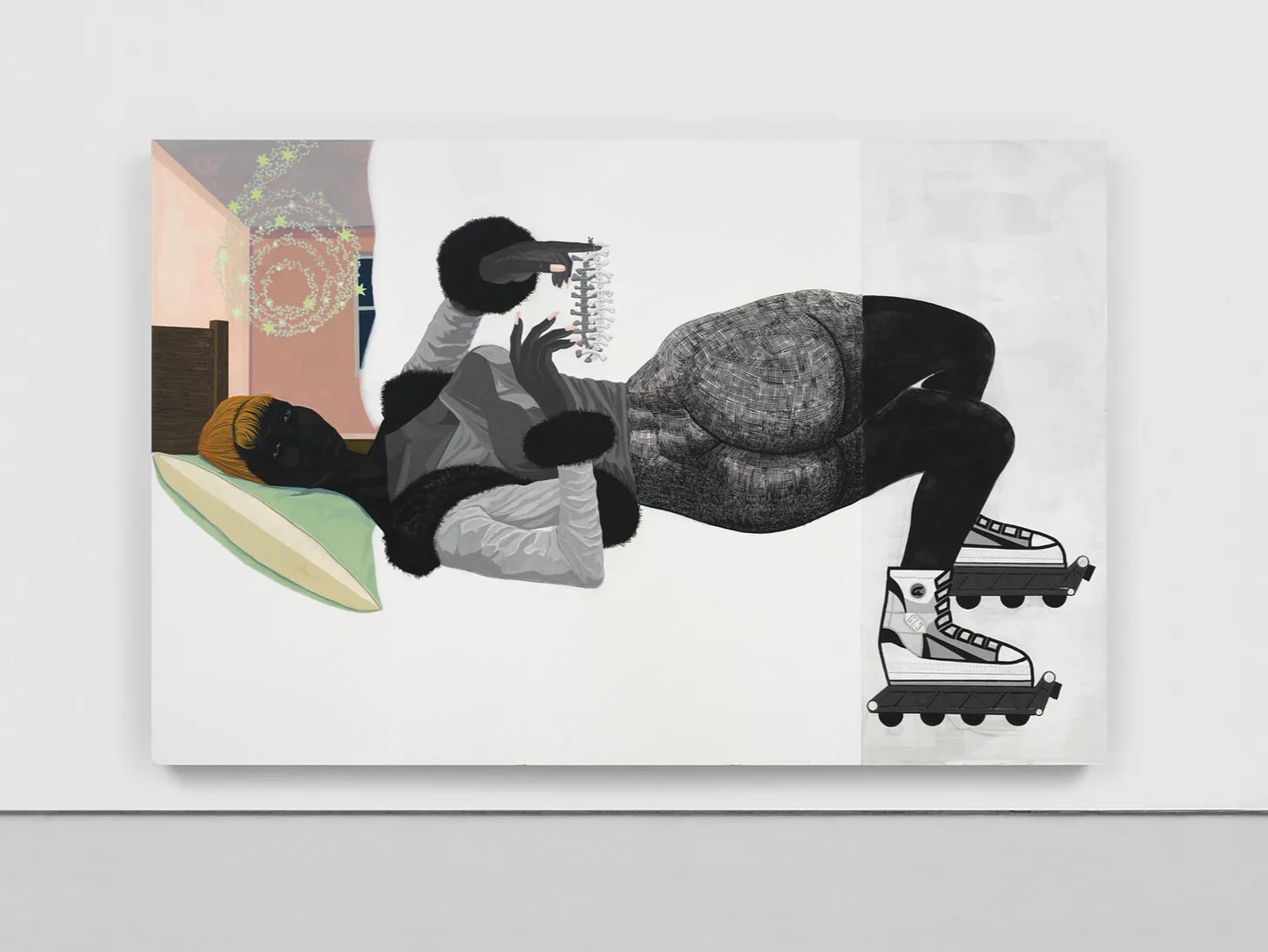
Kerry James Marshall, Untitled (Exquisite Corpse Rollerblades), 2022. Acrylic on PVC panel. © Kerry James Marshall. Courtesy the artist and Jack Shainman Gallery, New York.
Each image features a starkly different approach to the representation of the figure and Black bodies in particular. Marshall incorporates references to art history, pop culture, and political and social history. While still playing with a composite image, he’s removed the role of collaboration and chance. Marshall exerts control over the finished image.
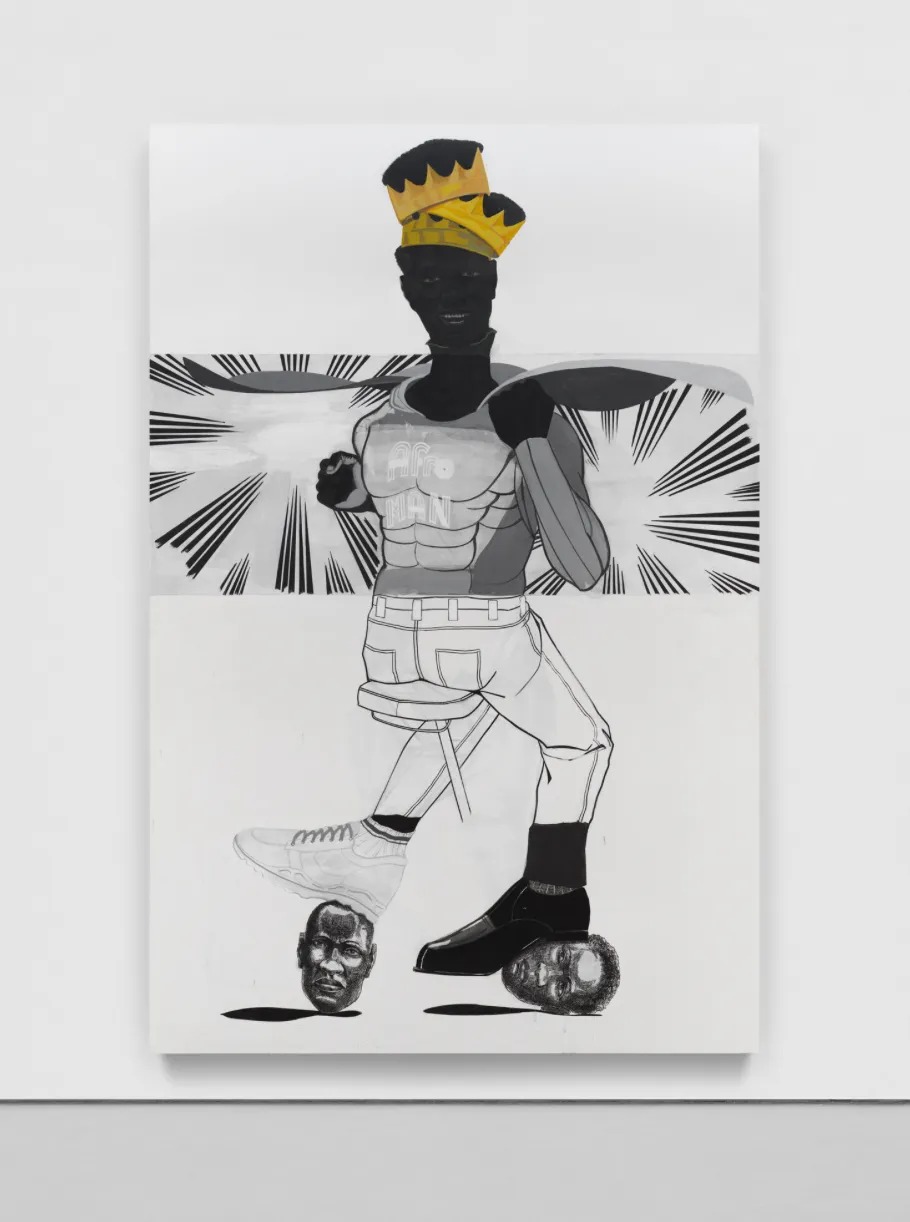
Kerry James Marshall, Untitled (Exquisite Corpse Afro Man), 2022. Acrylic on PVC panel. © Kerry James Marshall. Courtesy the artist and Jack Shainman Gallery, New York.
Asked how he made the works, Marshall said:
“Each exquisite corpse has four segments, and each segment has a different version of my signature. They all represent me at different stages of my development. There are Black figures that look a lot like the images I do all the time, but there’s also some cross-hatching—I don’t use that technique much now, but I used to. With each piece, I started with a head, then created a body. Together, those segments constitute relationships and meanings. I’ve described myself as a history painter, and that’s relevant here too. I’m looking at history and trying to draw out connections that people don’t automatically make.”
The titles of each piece are quite opaque, and Kerry James Marshall doesn’t give much direction to the viewers about what to make of these paintings. Maybe that’s another collaboration in this work: the artist is collaborating with the stages of his own development, and also with the viewer.
Whether we collaborate with one person, a huge group, two or three other, or our collaboration is a deliberate conversation with images, history and culture, the outcome is always layered, provocative, and imaginative. Not being able to anticipate the outcome makes the creative process all the more magical.
Everything is truly better when we do it TOGETHER.
Activity: Exquisite Corpse!
Alright, this week we COLLABORATE. We are creating Exquisite Corpses—with your friends, family, and other artists!
Step 1. Fold a piece of paper from top to bottom into three equal parts. Top is the head, middle is the torso, arms and legs, bottom part is the feet.
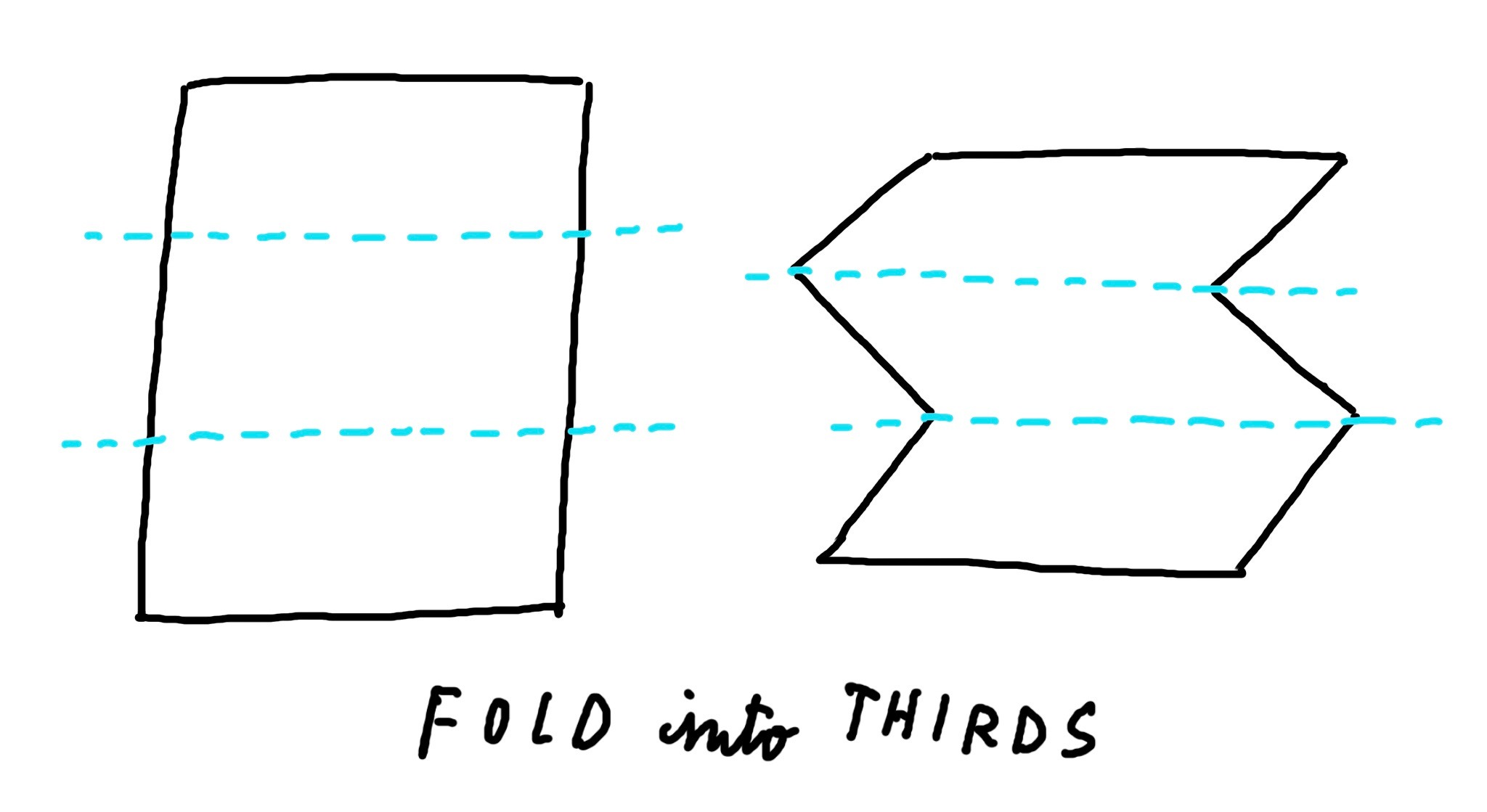
Step 2. If you’re the first person, draw on the top section of the paper (the head! or whatever). Then fold it back so the next person can’t see your creation. Extend the lines of your drawing just a smidge over the fold so the next person can connect their image to yours.
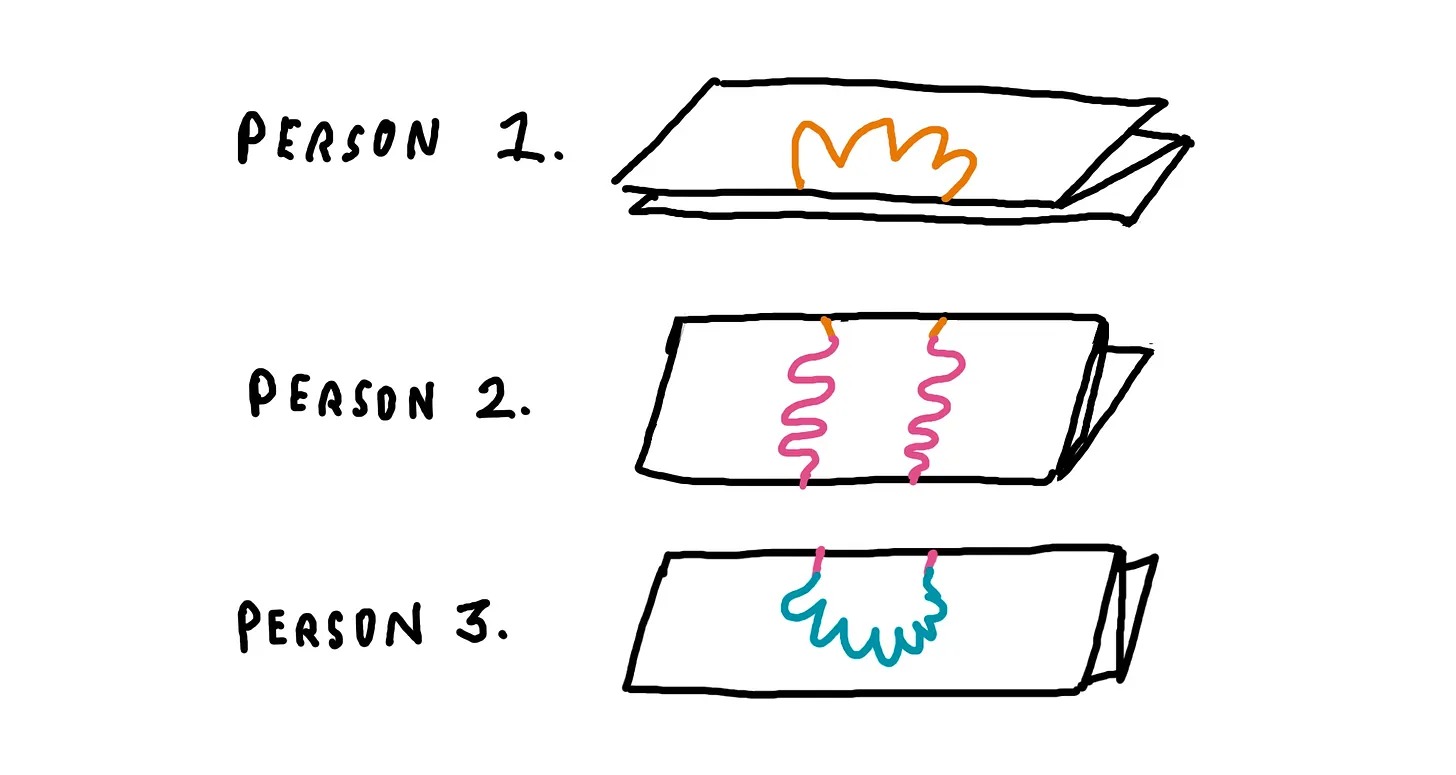
Step 3. Pass the paper to person number two! Be sure to keep your image hidden. They repeat the drawing, extending of the lines, folding, and passing.
Step 4. Repeat until the whole drawing is done.
Step 5. Unfold the paper and reveal your collaborative drawing!
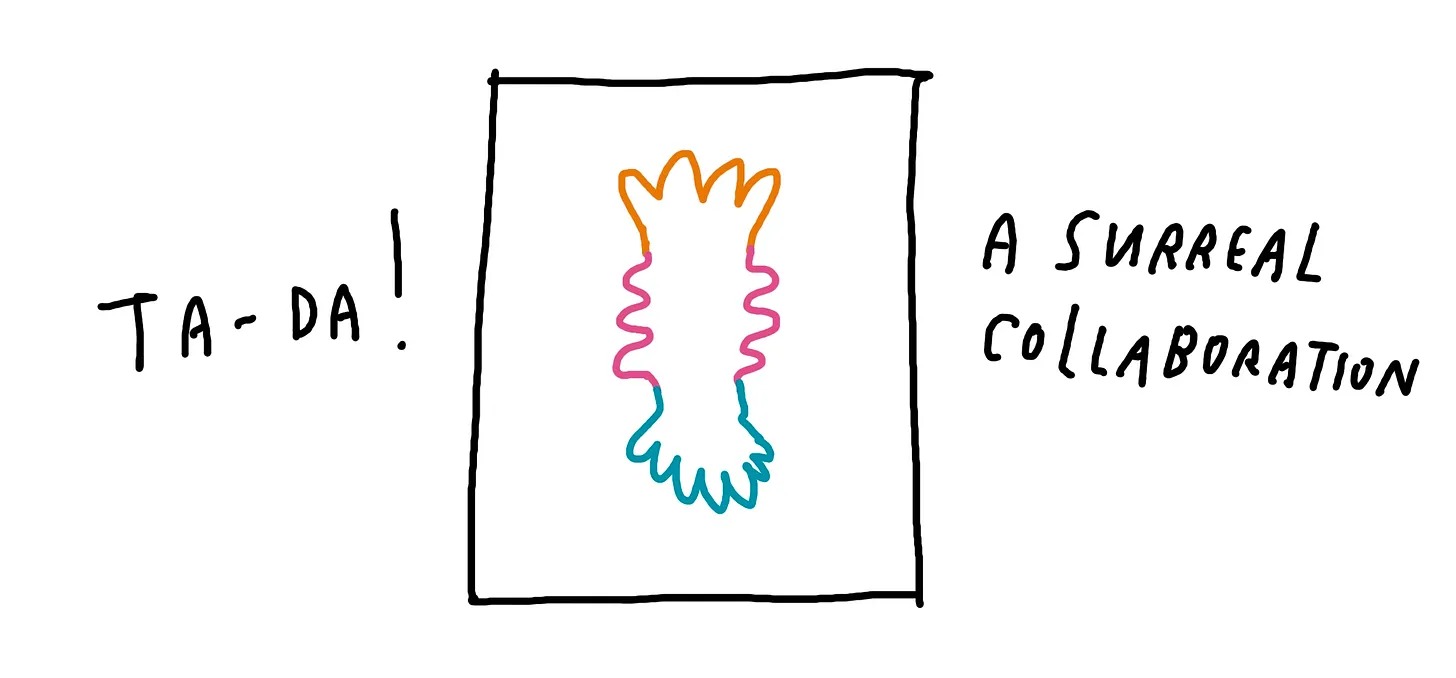
Step 6. Share your collaborative drawing with the world! Tag us on social @drawtogether.studio and @ngadc so we can see your creations!
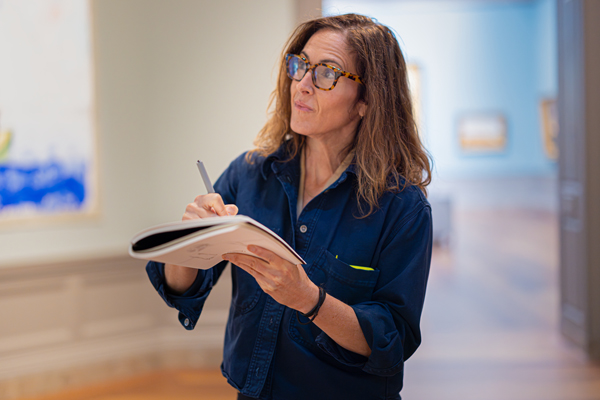
Wendy MacNaughton is a New York Times Bestselling artist, graphic journalist and educator. She inspires people see one another and the world with more curiosity and care through drawing. Her online DrawTogether community spreads joy and delight, all while learning about artists’ processes and stories.
